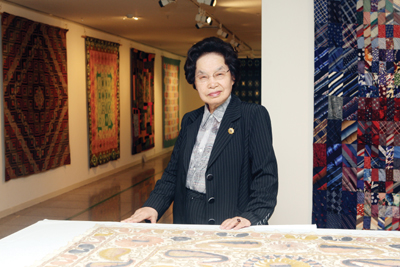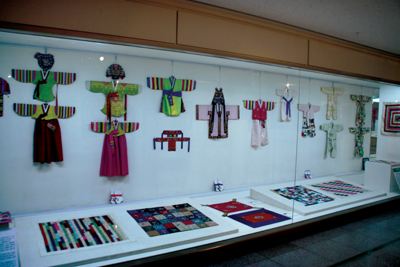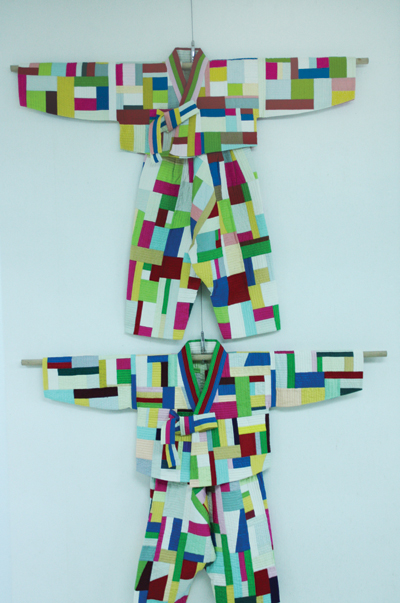
However, as the number of initiators and successors in Korean quilt-making has been diminishing over years; it has become more diffcult to preserve the traditional process of producing quilts. Kim Soon-hee (`55, Education) is one of the remaining successors preserving the Korean quilting process. After graduating from Ewha, she established the Chojun Textile & Art Museum in Myeongdong and was designated as the first master artisan in the field of quilting by the Human Resources Development Service of Korea in 2000.
In 1998, Kim’s house was remodeled into Korea’s one and only museum dedicated to traditional and foreign patchworks. It is being magnified as a new tourist route to foreigners for its unique items related to Korean and foreign quilting. Kim hopes to provide younger generations with an educational place to teach them about Korean quilts that are being threatened with extinction.

“I just wanted to make the next generations ‘well-educated’ about Korean traditional textiles,” Kim said.
As Kim had spent most of her life on Korean quilts, she came to realize that it actually taught her lessons of life.
“Impressive lesson is that when a knot of thread gets tangled, loosening it is better than cutting it out. This lesson can be applied to our lives. When relationships with others get tangled up, we should rather untie it than cut it,” Kim said.
The interesting point in Kim’s strategy to promote Korean traditional quilts is that she prefers the English word “quilt” to the Korean word nubi.
“If I use the word nubi, only Koreans will be able to understand the meaning. In today’s global era, the English word quilt will make it easier to let foreigners know about Korean textiles and patchworks,” Kim said.

Kim was invited to the “Quilt: 1700-2010” exhibition held at the Victoria and Albert Museum, the British royal museum in 2010. She hopes to hold this exhibition in Korea and also to hold a large-scale exhibition introducing Korean traditional patchworks and clothes in the United Kingdom.
Kim said, “There are no national borders in the field of quilting and needlework. Through quilts, people can feel the breath and the warmth of women throughout the world. I hope more foreign people could see Korean women’s fingerprints on Korean traditional quilts and feel Korean sentiments through
patchworks.”
Kim Jin-ah
jakim90@ewhain.net

